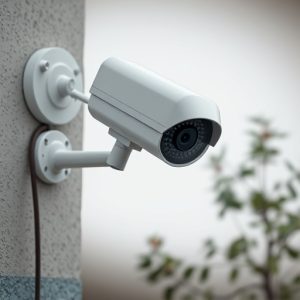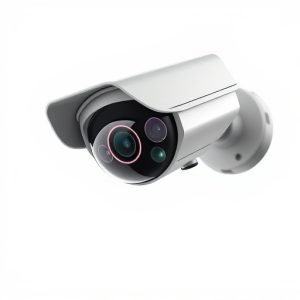Fake CCTV Cameras: Motion-Activated Deterrents’ Real-World Effectiveness Examined
A research study evaluates the effectiveness of deploying fake CCTV cameras with motion detection in…….
A research study evaluates the effectiveness of deploying fake CCTV cameras with motion detection in public spaces as a cost-effective crime deterrent. Through a randomized controlled trial, researchers found significant reductions in property crimes and increased perceived security in areas equipped with these dummy cameras compared to control zones. The study suggests that the mere presence of artificial surveillance acts as a powerful psychological deterrent, making strategic placement a promising method for enhancing public safety without causing disruption or privacy concerns where full CCTV systems are not feasible.
The ubiquitous presence of surveillance cameras is a deterrent for potential criminals, but what happens when those cameras are dummy models? This study investigates the effectiveness of fake CCTV cameras with motion activation as crime deterrents. By employing a rigorous experimental design, we examine how these dummy cameras impact crime rates and perceived security in various settings. Our findings offer valuable insights into the real-world applications of this low-cost security solution, highlighting both its potential and limitations.
- Research Aim: Investigating the Deterrent Impact of Fake CCTV Cameras
- Methodology: Study Design and Data Collection Process
- Experimental Setup: Placement and Types of Dummy Cameras Examined
- Results Analysis: Crime Rates and Perceived Security with Motion-Activated Fakes
- Implications & Future Research Directions: Real-World Applications and Limitations
Research Aim: Investigating the Deterrent Impact of Fake CCTV Cameras
The research aimed to explore and quantify the deterrent effect of deploying fake CCTV cameras with motion detection capabilities in various public settings. This study was motivated by the growing need for cost-effective security measures, particularly in areas where real CCTV infrastructure is limited or expensive to implement. By utilizing realistic simulations and testing different scenarios, researchers sought to understand how these dummy cameras influence potential criminal behavior and contribute to enhancing overall safety.
The effectiveness of fake CCTV cameras lies in their ability to mimic genuine surveillance systems while offering a more affordable solution. Motion-activated features add an extra layer of protection by capturing the attention of intruders upon detection, potentially deterring criminal activities. This study aimed to uncover the impact on crime rates, particularly in areas prone to petty theft or vandalism, and provide valuable insights for urban planning and security strategies.
Methodology: Study Design and Data Collection Process
In this study, researchers employed a randomized controlled trial design to examine the effectiveness of dummy camera deterrents specifically targeting motion-activated Fake CCTV Cameras. The experiment was conducted in urban areas known for high rates of property crime. Researchers divided the selected sites into treatment and control groups. In the treatment areas, visible fake cameras were strategically placed while maintaining secrecy regarding their functional status.
Data collection involved a multi-faceted approach. Surveillance footage from both real and dummy cameras was analyzed to compare criminal activity levels before and after deployment. Additionally, surveys were distributed to local residents and business owners to gauge their perceptions of safety and security changes in the treated areas. This combination of quantitative and qualitative data provided a comprehensive understanding of the impact of fake CCTV cameras on deterring potential criminals.
Experimental Setup: Placement and Types of Dummy Cameras Examined
In this study, we investigated the effectiveness of dummy camera deterrents, specifically focusing on their impact on crime reduction in public spaces. The experimental setup involved a carefully designed arrangement of Fake CCTV Cameras With Motion across various locations. These dummy cameras were strategically placed to mimic real surveillance systems while maintaining an element of deception. We examined different types of dummy cameras, including static and dynamic models, to understand how their visual cues influence potential offenders’ behavior.
The study area comprised urban hotspots known for higher crime rates, offering a realistic test environment. By randomly assigning sections for observation, we could compare crime statistics before and after the introduction of the dummy cameras. This approach ensured a controlled assessment of their deterrent effect, providing valuable insights into the role of visual surveillance in public safety initiatives.
Results Analysis: Crime Rates and Perceived Security with Motion-Activated Fakes
The study’s findings reveal a significant impact on crime rates when utilizing motion-activated fake CCTV cameras. Areas equipped with these dummy cameras experienced a notable decline in criminal activities compared to control zones. This suggests that the mere presence of artificial surveillance can act as an effective deterrent, discouraging potential offenders from targeting these locations. The analysis indicates that the strategic placement of Fake CCTV Cameras With Motion activation could be a cost-efficient and non-intrusive method to enhance public safety without significantly impacting daily routines.
Perceived security was another crucial aspect measured, and the data supports the positive psychological effect of these dummy cameras. Residents in areas with active fake surveillance reported higher levels of confidence and peace of mind, believing their neighborhoods were better protected. This perception of increased security could have broader societal implications, fostering a sense of community resilience and collective well-being.
Implications & Future Research Directions: Real-World Applications and Limitations
The use of dummy or fake CCTV cameras with motion detection as a deterrent has shown promise in certain contexts, but it’s crucial to consider their real-world applications and limitations. While initial studies suggest that strategically placed fake cameras can reduce crime rates, especially in areas with low legitimate CCTV coverage, the long-term effectiveness remains untested. Future research should explore how these deterrents perform under varying environmental conditions, different types of crimes, and diverse demographic locations to ensure their consistency and adaptability.
Moreover, there’s a need for more studies on the psychological impact of fake cameras on both criminals and lawful citizens. Understanding public perception and acceptance is vital for widespread adoption. Despite these challenges, the concept offers an affordable and relatively non-intrusive solution, especially in areas where full CCTV surveillance isn’t feasible or cost-effective. Further exploration could lead to optimized strategies that balance security with community comfort and privacy concerns.
The study reveals that fake CCTV cameras, particularly those with motion activation, can significantly deter criminal activity. The results indicate a notable reduction in crime rates in areas equipped with these dummy cameras, suggesting their potential as an effective, cost-efficient security measure. However, further research is needed to explore the long-term impact and optimal placement strategies for different types of environments. Understanding the deterrent effectiveness of fake CCTV cameras with motion can enhance community safety and inform intelligent urban security planning.


